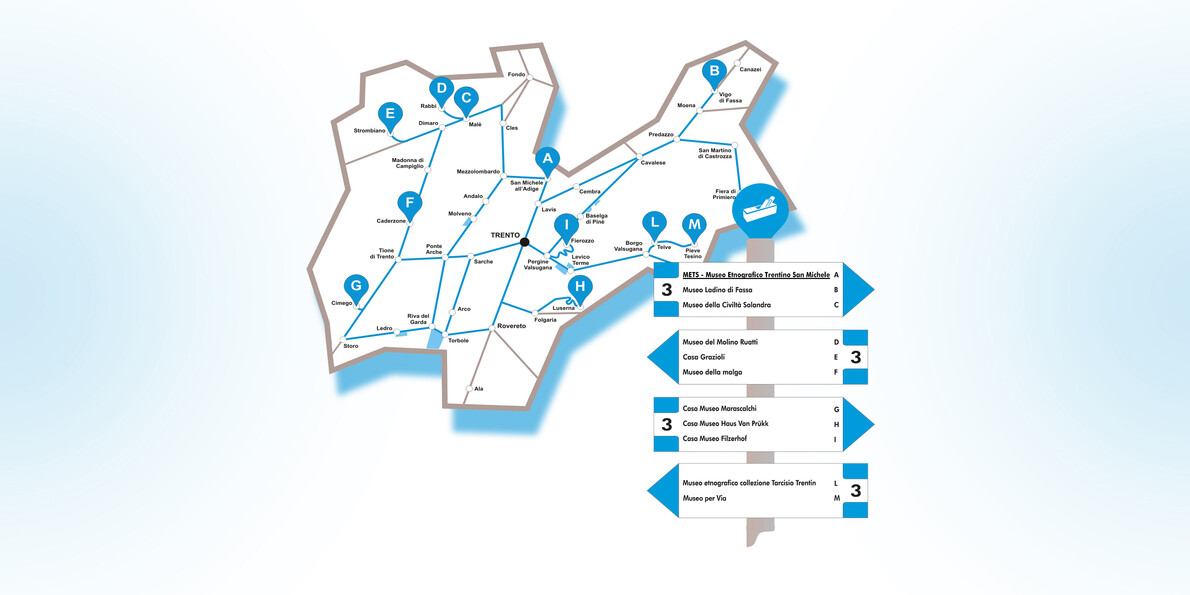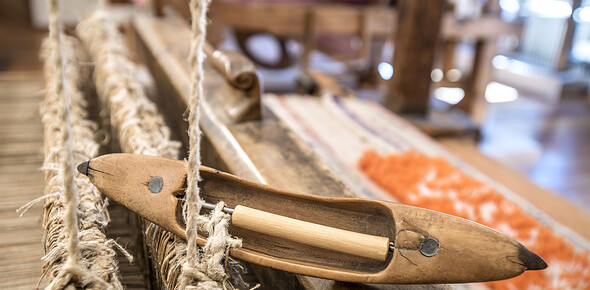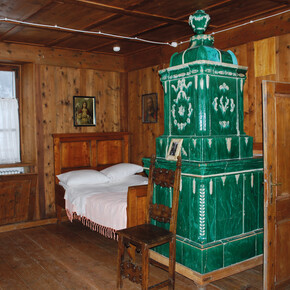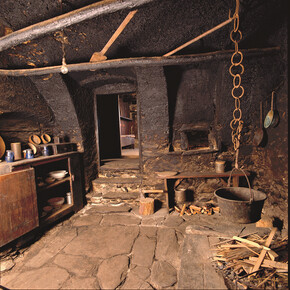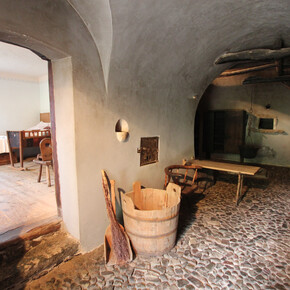What is a crazidèl?
From San Michele all’Adige to the valleys of Trentino: a journey back to our roots
Maybe you’ve never have held a crazidèl, but our grandparents certainly had. It was a copper bucket for the household water, and the womenfolk filled it at the fountain using a pail at the end of a long wooden pole. At home, the crazidèi – aka calcedrèi, ciauzerdrèi, sedèi or séci de ram, depending on where you lived – were hung up in the kitchen on a dedicated piece of furniture, and you helped yourself to water with a copper ladle.
It’s just one of the many objects you could find in the Trentino countryfolk’s houses and haybarns. These items have a special significance, as each one tells a story that links us to our past. To learn more, step this way for our Popular Traditions Cultural Trail – a journey through the mills and farmsteads, the humble houses and folk museums of Trentino.
Starting in San Michele all’Adige, we pause in the Val di Fassa (Stages A-B)
Stage one on our route begins in the village of San Michele all’Adige at the Museum of Trentino Folk Customs, one of Italy’s most important museums on folklore and popular traditions. Its 43 rooms in 25 sections on 5 floors tell the story with passion and care, exploring themes like farming, winemaking, animal husbandry and craftworking. There’s a fascinating section on the carnival tradition in the Alps and across Europe. So if you want to know more about the crazidèl, this is the place!
An hour and a quarter away by car, the next museum is in the heart of the Val di Fassa, in the village of Vigo, where the ancient Ladin language is still spoken. Here, in the foothills of the Rosengarten massif, the Museo Ladin de Fascia (as it’s known in this local tongue) houses the collection of the Ladin Cultural Institute. Multimedia material, information aplenty and the drawings of artist Milo Manara will introduce you to the culture of this intriguing Alpine people.
Then stick around until sunset to witness the spectacular enrosadira, when the Dolomites light up in evening pink.
To the peaks of the Val di Sole (Stages C–D-E)
Per raggiungere le prossime tre tappe e scoprire come si viveva in questi borghi di montagna nel secolo scorso, dovrai spostarti sul versante ovest del Trentino, in Val di Sole.
For the next three stages, to learn how people lived in these mountain villages a century ago, head west to the Val di Sole and the Museum of Val di Sole Culture, in Malé. Its extensive collection of period tools will show you the age-old jobs and trades that kept society going: from carpenter to coppersmith and farm hand to livestock farmer. The museum faithfully recreates the domestic settings of yesteryear – like the stùa or main room and the kitchen with its hearth, the family focal point on winter evenings.
Next we visit an old water mill that’s still in use: the Ruatti mill in the Val di Rabbi, not far from Malé. Outside, you can see the waterwheel that drives the grinding mechanism. The first floor was were the miller and his family lived, with the bedrooms, kitchen and traditional stùa. The upper floor housed the haybarn and the accommodation for the famèi (the young worker), all made of wood.
The last of our three stop-offs is in the village of Strombiano in the Val di Pejo. for the Grazioli house, aka the Casa de la Béga, the nickname of Domenica Grazioli, who lived here until 1991. Inside, nothing has been changed. The family snaps, the clothes in the wardrobe, the smoke-blackened kitchen walls and open hearth are just as she left them. It’s a deep dive into the past. But now our next destination beckons, in the heart of the Brenta Dolomites.
From the Val Rendena to the Valle del Chiese (Stages F-G)
We reach the village of Caderzone Terme in Adamello Brenta Natural Park, for a visit to the Malga Farmstead museum (Museo della Malga). Housed on the ground floor of the stables at Palazzo Lodron-Bertelli, the museum tells the story of working life in the Alpine pastures of Giudicarie: from grazing the animals and milking to making the dairy products. It’s the best way to get a flavour of everyday farm life.
About a 40-minute drive away, we reach the Marascalchi house museum in Cimego, in the Valle del Chiese. Its stable, cellar, kitchens and bedrooms – not to mention the wooden attic where the hay was kept and the grain was cleaned – reveal the furnishings and knick-knacks of a peasant family that emigrated in 1962.
Cimbrian and Mòcheno culture (Stages H–I)
At the start of our Cultural Trail, we introduced you to the language and traditions of the Ladin people. Now it’s the turn of the Cimbrian and Mòcheno cultures, the region’s other minority-language communities.
We have two of their symbolic places to show you – starting with the Cimbrian Haus Von Prükk in Lusern/Luserna. Restored to its former condition, this 19th-century peasant dwelling is made of limestone; you can see the rooms where people lived, raised their animals and kept their food The bedroom offers objects decorated with pillow lacework.
To get to know the Mòcheno people, step inside another house: the Filzerhof, in the village of Vlarotz/Fierozzo in the Valle dei Mòcheni. This farmhouse turned folk museum recounts the everyday life of the descendants of the German speakers who settled in the valleys in the 13th century.
Our journey through Trentino tradition ends in the heart of the Valsugana, with a visit to the Tarcisio Trentin Collection at the folk museum in Telve di Sopra. Its 2,000+ objects fall into 12 themed sections covering work tools, the rooms in the rural household, the classroom and the farm dairy.
Final two stages in Valsugana (Stages L-M)
Your journey of discovery through the traditions of Trentino ends in the heart of Valsugana, with two more museums to visit. The first is the Tarcisio Trentin Collection at the Folk Museum in Telve di Sopra. Its rooms are home to a collection of over 2,000 objects, falling into 12 themed sections: from rural household settings to work tools, and from the classroom to the dairy farm.
The second museum, and the last one on the Cultural Trail dedicated to traditions, is the Per Via Museum. Here, artefacts tell the tales of the travelling peddlers who reached the farthest corners of the globe with their artistic prints. This small yet fascinating exhibition explores a variety of perspectives: that of the travellers themselves, undertaking unimaginable journeys on foot, and that of their families, who stayed in their home towns and faced the challenges of everyday life in the Alps.


